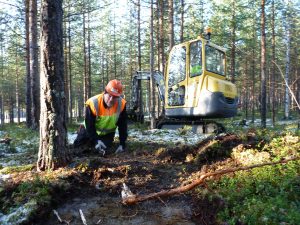The Swedish Antiquities Act is the oldest in the world and was established as early as 1666. The kings of the time wanted to prove that Sweden had been a great country for a very long time. For this reason, vicars across the country were urged to make a record of any material remains in their local area. The work of the vicars laid the foundation for our current knowledge of Sweden’s archaeological record.
Over the centuries, prehistoric objects have been unearthed as a result of agriculture. Many of the finds were submitted to museums, and archaeologists were subsequently able to determine temporal connections between the different objects. Based on the different finds, prehistory could be ordered into broad functional periods: the Stone Age, the Bronze Age and the Iron Age. The order partly reflected the materials used to make objects during the three time periods.
By around 1960, the radiocarbon dating (carbon-14 dating) method had become commonplace. Prior to this, archaeological remains had been dated based on different object types, but this new method provided archaeologists with the means for safer, more precise dating of material remains. Carbon-14 dating is used today together with an array of other scientific methods to attempt to provide answers to how prehistoric peoples lived.
Present-day archaeology is a part of land development. In connection with land exploitation and construction projects, several archaeological surveys and investigations are carried out annually in Västerbotten. Each investigation contributes to greater knowledge of the prehistory of the county.

Mikael Jakobsson from the Museum of Forestry investigating a Sami hearth in Furuvik, Lycksele

